A bridge full of bats
We have approximately 250,000 Mexican free-tail bats when the colony under the Waugh Drive bat bridge is rolling. That’s roughly 6,250 pounds of mammal. I’m not sure, pound for pound, there is a larger concentration of wildlife in the city.
This huge biomass creates its own gravitational field.
We have a pair of red-shouldered hawks in the Park. Last year I chronicled the chick they raised. It was curious to me that every time I could identify the prey that was brought to the chick, it was an anole lizard. The only other prey I know for a fact they take are bats. Almost every morning, you will see the hawks hanging around under the bat bridge. They swoop the width of the bridge, inverting slightly so they can drag a toe through a groove. The bats live in the grooves.
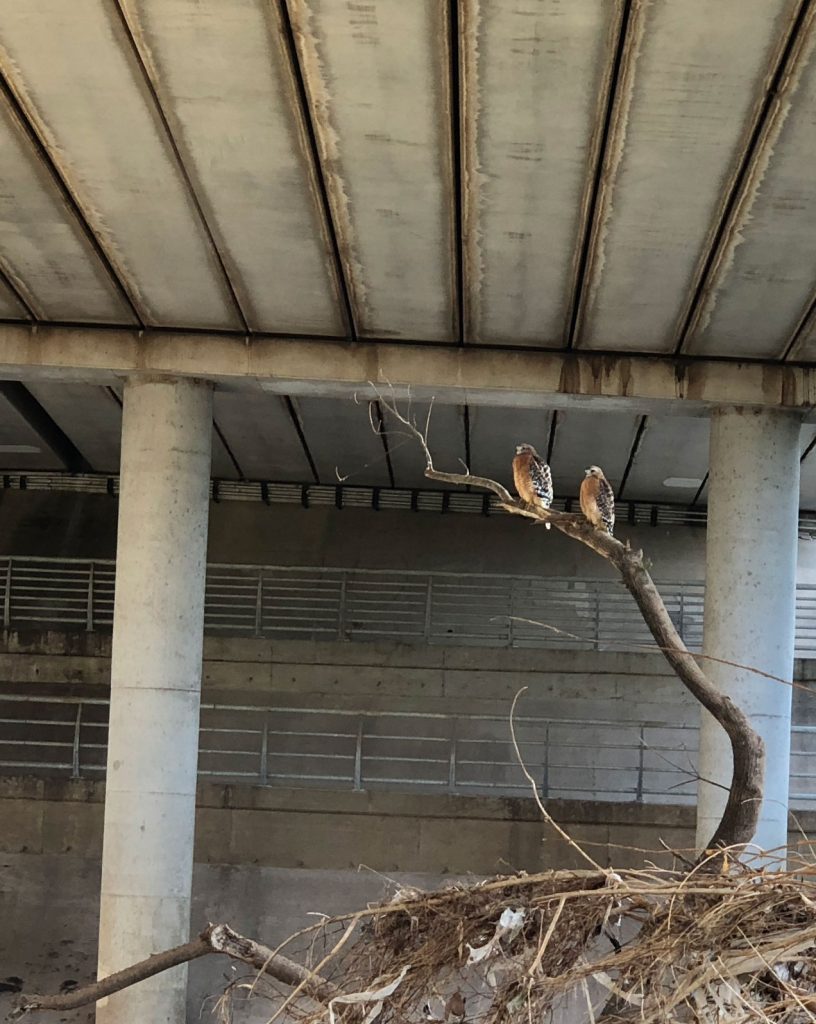
The hawks used to hang out on a dead tree under the bridge. That tree is gone, so now, the hawks use the living trees surrounding the bridge.
I have a very bad video of this maneuver which I hadn’t shared before because it is so bad. But, it’s the best I can do to show you the behavior. It starts at regular speed and then I “zoom in” and slow things way down so you can see her maneuver around the grooves. The video has been adjusted to brighten it up. It’s worth it to click on the full-screen view.
Bat vs. anole from the point of view of a hungry hawk
A Mexican free-tail bat weighs approximately .45 ounces. A green anole weighs approximately .16 ounces, two and a half times less than the bat. The new Cuban anoles that have recently muscled most of the green anoles up into the trees are .19 ounces, which is a bit more, but still nothing like a bat.
I don’t know to what extent the bats feed our hawks, but I do know that I see hawks at the bat bridge every morning I am in the Park.
Our bats also feed a pair of Swainson’s hawks who have been resident here for most summers. They apparently can’t read, because the books say they aren’t here in breeding season. But every spring and summer evening, they fly through the emerging stream catching bat after bat in their claws, and seem to eat them mid air. I say seem to because it is possible they just pass a bat to their mouths to hold onto so the claws are free to catch another. Either way, it is something to behold.
Cliff swallows
Before I go further about who’s getting fed by bats, I should bring the cliff swallows into the mix. They will return from South America in April or May expecting to find their nests, which ring the tops of the pillars under the bat bridge. You can see some of them in the hawk video above, which is from 2017.
The colony has been in this spot for as long as I have been visiting the Park, which is almost 30 years. Harvey wiped out the nests, so when they returned after the storm, they found nothing but ruin. They rebuilt. Last year, the population exploded and we are almost back to where we were. This year, there will likely be more.
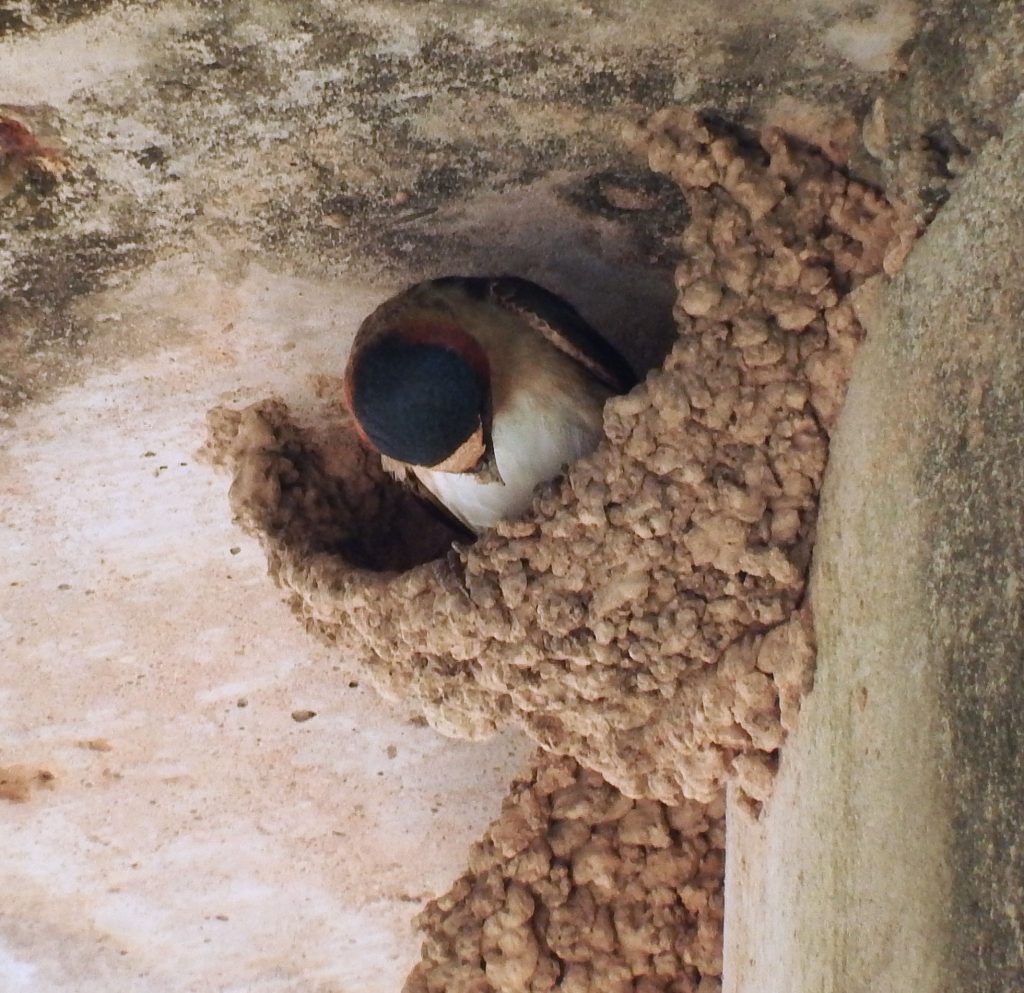
When they arrive, they patch up their nests and if the colony is growing, there will be more mated pairs than nests, so the swallows start building anew. They gather clay from the banks of the bayou and bit by bit, mouthful by mouthful, they construct their nests.
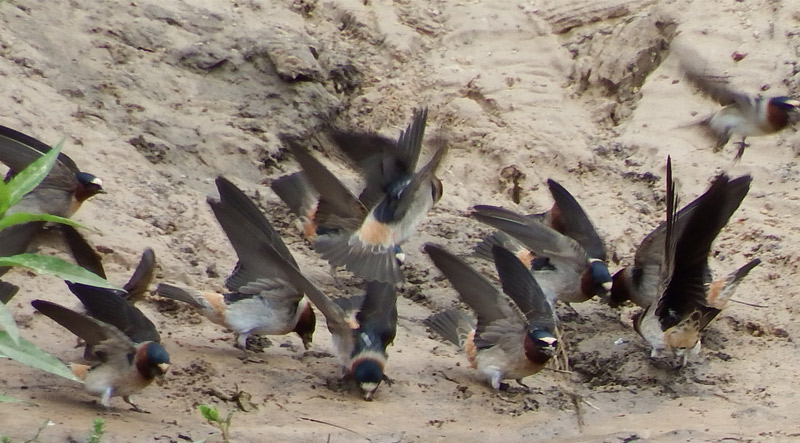
By this point, the bat bridge is so active that I can barely chronicle all that takes place.
The black crowned night herons take up permanent residence under the bridge. It is a steady feast of baby birds tumbled from their nests and grounded bats.
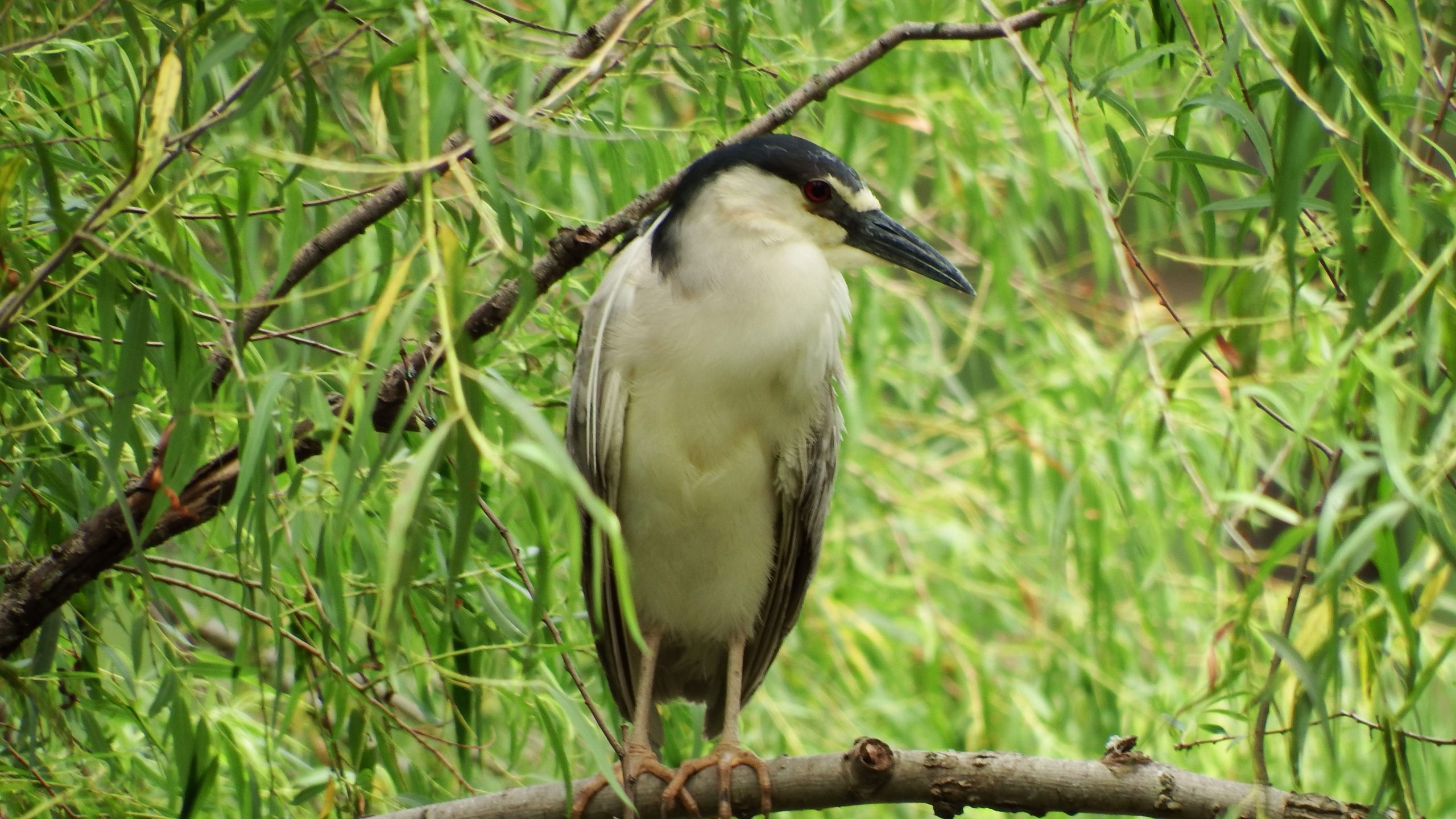
When things really get going, even the yellow-crowned night herons, with their picky eating style, will venture beyond the Greentree area to feast on bats and birds.
I have found all manner of snakes in the vicinity of the bridge, including my first coral snake. There has been a hognose snake and many diamond-backed water snakes.
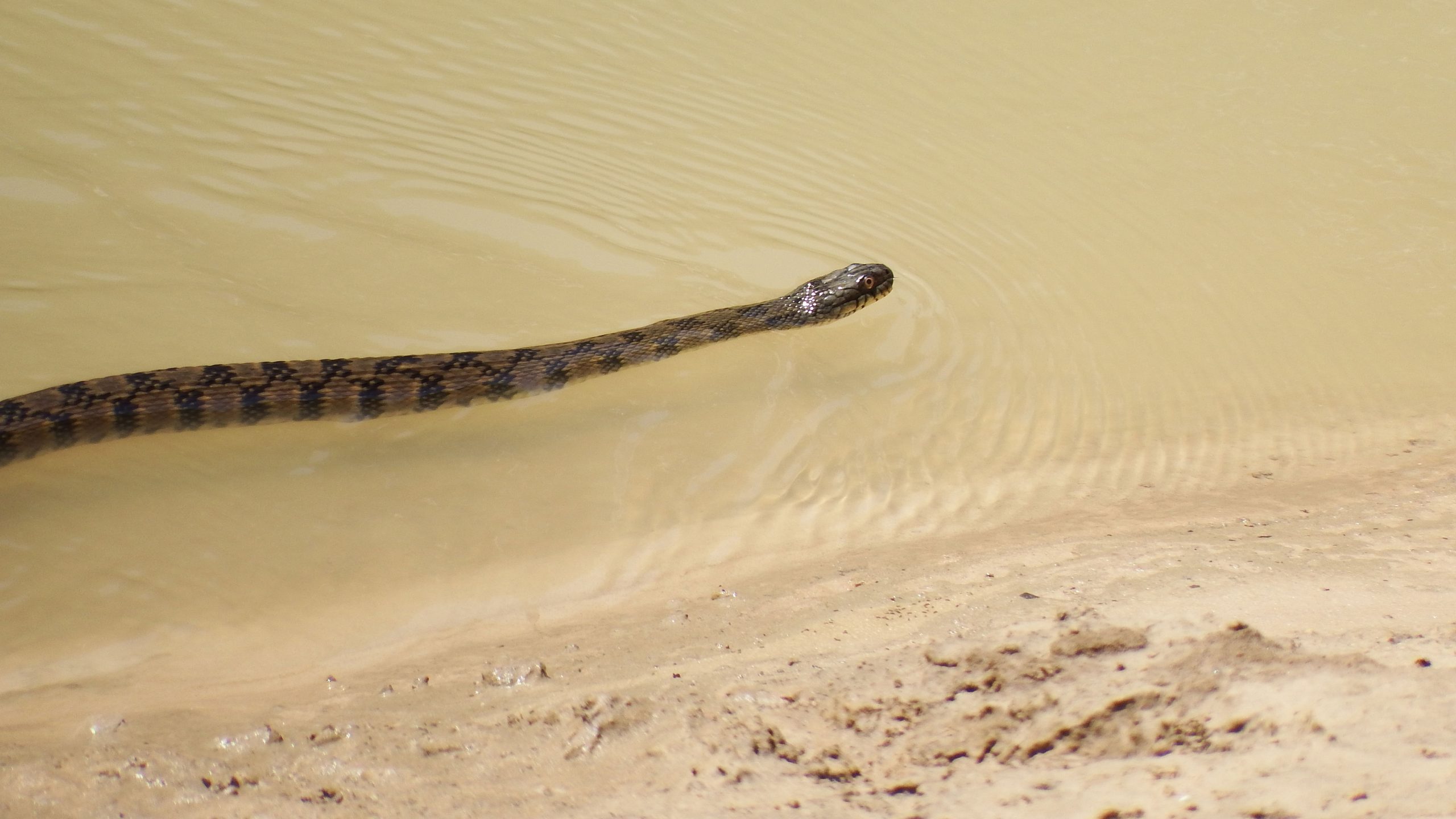
And then, of course, there is our beaver.
Buffalo Bayou Partnership has received an award from The Rudy Bruner Foundation. I accompanied the judges on an evening boat tour of the bat bridge where we bobbed on the bayou while Swainson’s hawks wove back and forth through the cloud of bats. One of our beavers came by to explore the black willow just east of the bridge.
I don’t want to claim (okay, I do) that the bat bridge had a heavy influence, but I can’t imagine anyone was let down.
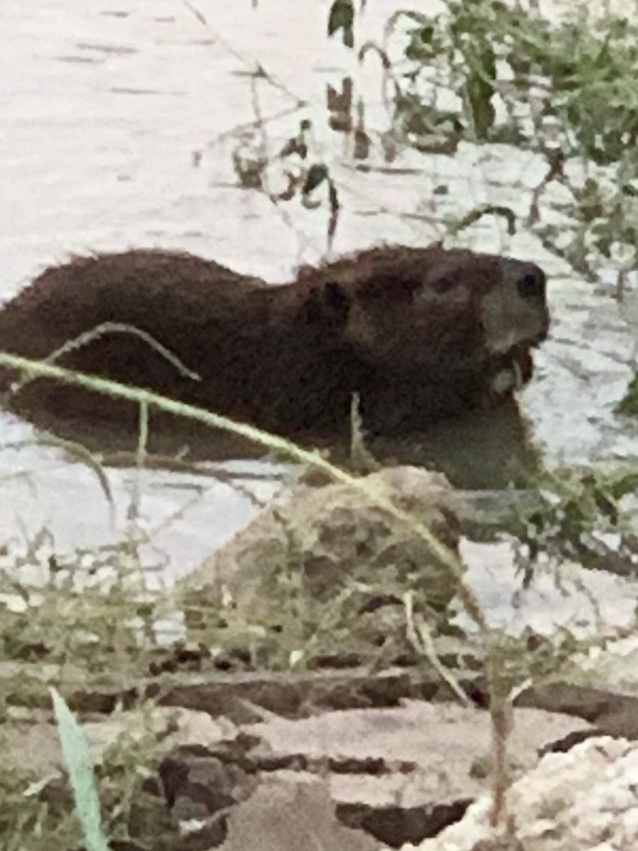
This is the best photo I have seen of our beaver. Fellow Master Naturalist Ethelyn Kuldell caught this photo on her morning bayou walk. It was taken just east of the bat bridge. Ethelyn likes to torment me with reported sightings. Always on her early walk, always near the bat bridge.
The reason I am writing about this now is that the flood control district is working to repair some bank erosion on the bayou. The bat bridge is one of the areas where remediation is planned. I cannot think of a time when a prolonged work project under the bridge would not disturb the wildlife of the Park. There are times (May through July for the swallows, breeding season for the bats) when sustained work in the area would be devastating. But even in winter, everyone who is dining on what the bat bridge yields will not have the access they need. When it is cold, the lizards aren’t as active and the bats might be what our hawks rely on.
Also important are the trees around the bridge, most particularly that lovely black willow on the north bank. These are crucial for the red-shouldered hawks to perch between flights and also for the young cliff swallows to congregate in creches once they outgrow the nest. The photo of the black-crowned night heron above was taken in that tree.
I have no great advice for those whose job it is to maintain the banks of the bayou, but I plead caution. Urban environments are very stressful for wildlife, resources are few and far between. Our Park has an abundance of life and its beating heart is a bridge full of bats.

